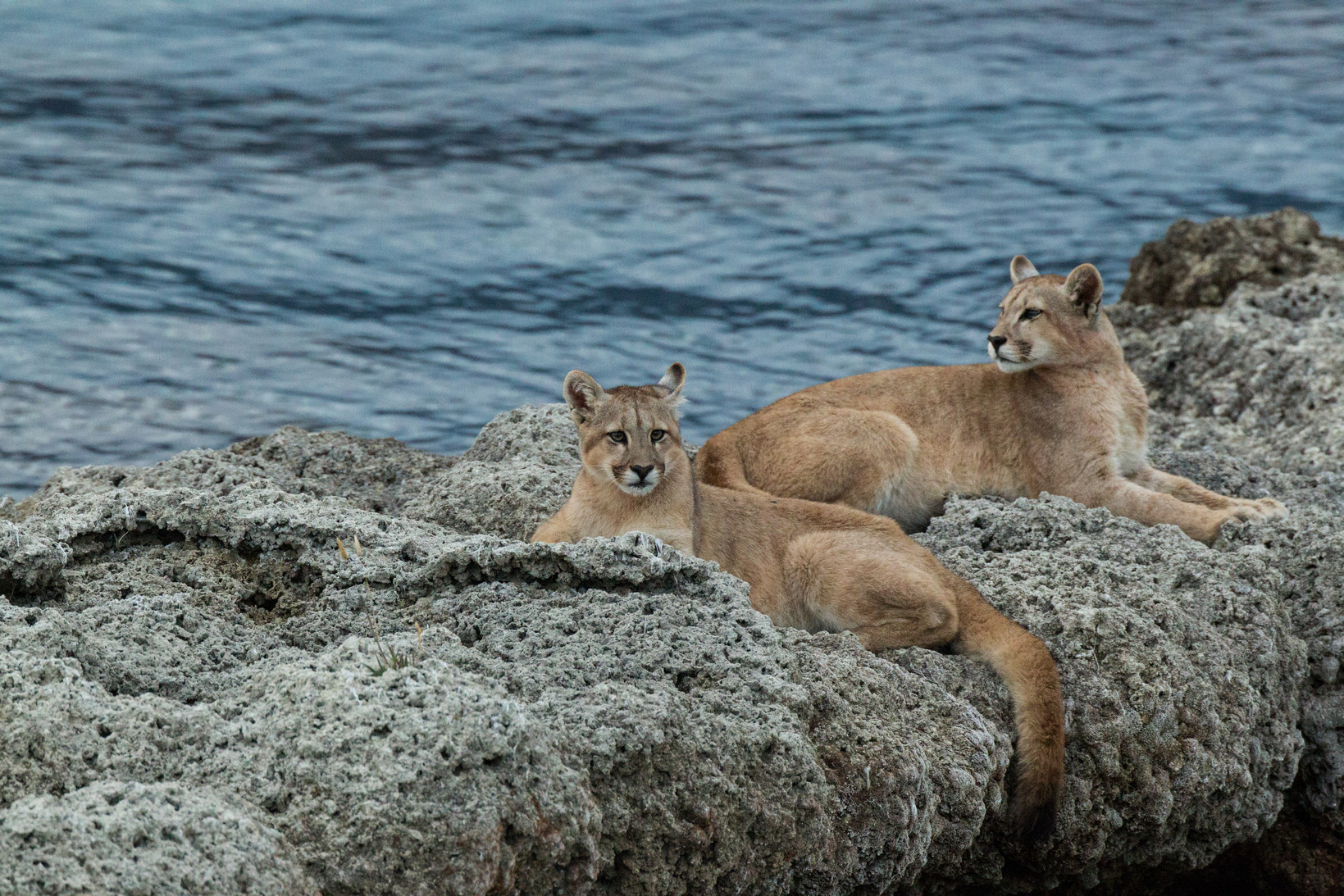On the West side of the property of Estancia Laguna Amarga, the natural border is made up of the impressive Lake Sarmiento, the second-largest lake in the national park, with approximately 80 km2 (25 sq miles), and a maximum depth of 310 meters (900 ft). The largest lake is Lake Toro. Its size and dark blue water, plus the view of the Paine Massif, give it a good reason to stop, and enjoy the view.
A popular place for puma photography
Its name, Sarmiento, comes from the Spanish explorer, Pedro Sarmiento de Gamboa. He traveled to these latitudes from 1579 to 1580 and plays an important paper in the history of Magallanes since he was part of the first expedition to cross the Strait of Magellan from the Pacific to the Atlantic Ocean, and he also made some of the first maps of the area.
When searching for pumas, the lake area isn't always the easiest place because there are a lot of tall bushes where it can be difficult to spot pumas, and the accessibility by car is limited, so to do sightings in this area requires some walking and some balance. But to find a puma close to the lake or on the white rocks, is always a beautiful sighting because the white rocks and the blue water make a beautiful contrast to the puma. Many of our guests dream of a photo with a puma close to the Sarmiento lake!
Thrombolites - a sign of life
So what are these white rocks? These white formations at the lake shore are called thrombolites. The coral-looking structures are formed by a microorganism called cyanobacteria or blue-green algae. These microorganisms need very special conditions to be able to make these thrombolites: saline water. Lake Sarmiento, just like Amarga Lagoon, has a closed system. There is water inflow, but no drainage. This causes a very saline environment (pH value of 9), an environment that the cyanobacteria use to photosynthesize and precipitate calcium, producing these white clustered formations. Basically they trap, bind and cementate sediment grains to a tiny film they make. It is a slow process, and these formations grow less than 1 mm per year. So thrombolites of 2 meters, you can guess this has been a process of many years, that started with the last glaciation more than 10,000 years ago.
Fossils or not
It is very important that the environment is very saline, so no other animals can live there. For example, the snails usually feed on this thin film of calciocarbionate that the microorganisms produce. This is why these formations are very unusual, and only exist in a few places in the world, because these formations need the right conditions and environment to grow.
These formations are being studies by scientists, and they are said to be fossils, but they are not exactly fossils, but more an evidence for biological activity. Lake Sarmiento isn't that "that old", but in England, at the Fossil Forest, there are thrombolits of more than 145 million years old, evidence of some of the first life on Earth. This is why these formations are so interesting for scientists to study.
Photo credits: John K Estrada
